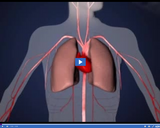
Oxygen mixes with blood in the lungs and is then pumped throughout the body.
- Subject:
- Science
- Provider:
- Utah Education Network
- Provider Set:
- Animations and Images 2011 Collection
- Author:
- Visual Learning Company
- Date Added:
- 08/18/2011

Oxygen mixes with blood in the lungs and is then pumped throughout the body.

Center for Disease Control and Prevention site for bloodborne infectious diseases: HIV/AIDS, Hepatitis B & C.

Learn why New York City’s poor white and immigrant working class protested the Conscription Act of 1863 and eventually killed at least 120 people, targeting African Americans, during the New York City Draft Riots, the bloodiest race riots in U.S. history.

This is a teacher-created resource. It is a Blow the Roof Off activity that will give an overview of Utah History and geography.

This is a computer science lesson plan created by educators in the South Sanpete School District. Students will read a story that describes the first computer bug. This book will help students to see character qualities in a computer scientist who broke social norms, persevered, and loved solving problems. They will then go on to debug programs with bugs using Blue Bots. The lesson is designed for fifth grade and includes modifications for grades 1-5.

When it comes to corn, Indigenous people have long known the benefits. Host Dr. Lee Francis of Laguna Pueblo discusses the health benefits of a classic Indigenous staple food: blue corn mush. What makes blue corn blue? Why is ash added to traditional blue corn mush? What makes it so healthy?

The Blue Lake Rancheria Tribe—a federally recognized Native American tribe in California—was one of 16 communities selected as a 2015–2016 Climate Action Champion by the Obama Administration for exceptional work in response to climate change.
The Tribe began its strategic climate action planning in 2008 and has become a regional leader in greenhouse gas reductions and community resiliency measures. To date, the Tribe has reduced energy consumption from 2008 levels by 35 percent and has committed to reduce greenhouse gas emissions 40 percent by 2018, utilizing a range of approaches—including aggressive energy efficiency upgrades, developing on-site renewable energy (biomass, solar, fuel cells, grid battery storage), and switching to green fuels (electricity and biodiesel).
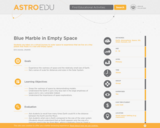
Using photographs and models, students are taken on a virtual journey to outer space. They can look back at the Earth as they travel further away and see it growing increasingly smaller, giving the experience that we live on a tiny planet that floats in a vast and empty space.
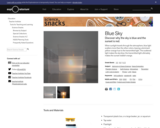
This activity provides instructions for using a flashlight and aquarium (or other container of water) to explain why the sky is blue and sunsets are red. When the white light from the sun shines through the earth's atmosphere, it collides with gas molecules with the blue light scattering more than the other colors, leaving a dominant yellow-orange hue to the transmitted light. The scattered light makes the sky blue; the transmitted light makes the sunset reddish orange. The section entitled What's Going On? explains this phenomena.
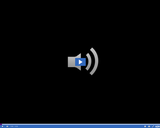
This resource is a free, downloadable audio file of short music clips to use for instruction.
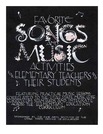
This resource includes the sheet music, activity instructions, and audio files for "Bluebird, Bluebird" from the Elementary Songbook.
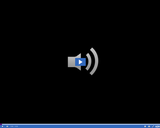
This resource is a free, downloadable audio file of short music clips to use for instruction.

Download this librarian’s guide to see how to implement Bluetrack activities in your library. This guide includes a list of what you’ll need, tips for choosing a theme, and ideas to run a library activity. Be sure to search eMedia for the Bluetrack Challenge Cards that accompany this resource.

Download these premade Bluetrack Challenge Cards to help you run an effective Bluetrack activity in your library or classroom. Be sure to also search for the "Bluetrack: A librarian's guide" resource in eMedia to support your use of these cards.

After reading several examples of how a published author incorporates facts in fiction writing, students research a topic of their choice and write fictional diary entries that incorporate factual information.

Andrew Branca, a high school student from Central Academy of Technology and Arts, in North Carolina talks about how he was inspired to write Boal after attending a summer theater workshop on Brazilian theater activist Augusto Boal. Cast members discuss what it was like to collaborate on the playwriting process and why they felt it was important to start a serious discussion on racism and Islamophobia.
Sensitive: This resource contains material that may be sensitive for some students. Teachers should exercise discretion in evaluating whether this resource is suitable for their class.

Boal is a play written and performed by high school students from the Central Academy of Technology and Arts in Monroe, North Carolina. Boal brings a variety of social issues to the stage, focusing on racism and Islamophobia.
The play was inspired by Augusto Boal, a Brazilian theater director, writer, and politician. Boal was the founder of the Theatre of the Oppressed, a theatrical group dedicated to creating political change.
The performance was taped as part of the High School Theatre Festival during the Southeastern Theatre Conference.
Sensitive: This resource contains material that may be sensitive for some students. Teachers should exercise discretion in evaluating whether this resource is suitable for their class.
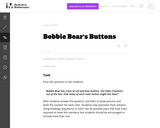
The purpose of this task is for students to find different pairs of numbers that sum to 4.
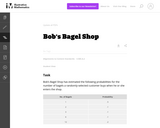
The purpose of this task is to assess a student's ability to compute and interpret an expected value. Notice that interpreting expected value requires thinking in terms of a long-run average.

Throughout the day, your nervous system monitors and makes endless adjustments to your body's basic systems -- all to keep you alive. This interactive feature illustrates the complexity of such a task.